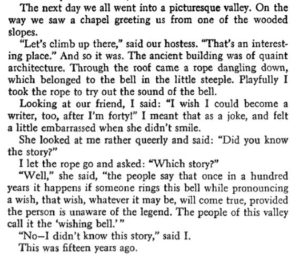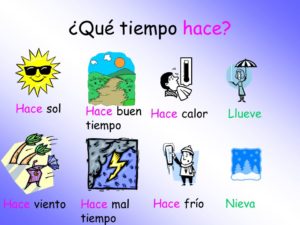In a workshop I recently gave in Atlantic City, I distributed the following list of possible linguistics-based projects for the foreign language classroom. They are adaptable for a variety of languages and levels of instruction. To download a PDF version, click here.
This list is a subset of the projects included in the companion website for my book, ¿Por qué? 101 Questions about Spanish. Here I divided them into the four categories of “Language history,” “The target language in the world,” “Language learning,” and “Language use”.
If you make use of this list, as an instructor or a student, please write back and let me know how the project(s) turned out.
Language history
- Examine a few pages written in an older form of the target language. What are obvious ways that the language has changed?
- Look up the origins of the words in either (i) a sample of text from the target language, or (ii) a specific vocabulary domain, such as clothing or animals. Where do the words come from, and what does this teach about the history of your language?
- Research and create an infographic about a phase in the history of your language, such as the Golden Age of Spain or the Napoleonic period in France. What were the linguistic landmarks of these periods?
- Research vocabulary borrowings into English from the target language. What do they tell you about how the two cultures have interacted?
- Research the etymology of a dozen place names (names of cities, towns, etc.) in a country that speaks your target language. What does it this exercise teach you about the language’s history? Summarize your findings on a map or other infographic.
The target language in the world
- Use Ethnologue (an on-line database about world languages) to gather data on where the target language is spoken and what other languages are spoken in those countries. Present as an infographic or a slideshow.
- Profile a language academy such as the Académie française or the United States branch of the Real Academia Española. Who are the members? What are their activities and/or publications? What would you ask if you could interview them?
- Research and present information about a language controversy, such as Catalan versus Castilian in Catalonia, or the historical tussle between French and Alsatian in Alsace.
- What information does the most recent USA census provide about speakers of your target language in our country?
Language learning
- Try to predict which features of English are most hardest to learn for speakers of other languages. Interview an ESL teacher to test your predictions.
- Try a few lessons in the target language from Duolingo, Rosetta Stone, or other language learning software. How does the software try to teach the language? How is this different from classroom learning?
Language use
- How might you reform the spelling of your target language to make it easier? Argue for your changes and transform a sample page using your proposed changes.
- Pick your favorite language rule: ser vs. estar, passé composé vs. imparfait, and so on. Analyze actual text (perhaps a newspaper article) to see if the rules taught in class explain the actual usage.
- Learn how to speak “Pig Latin” in the target language (e.g. Spanish jerigonza). A speed contest may be in order! What do you have to think about as you speak in order to accomplish this?
- Find, watch, and compare instructional videos on some difficult aspect of pronouncing your language (like rolling your r’s). Make your own instructional video.




